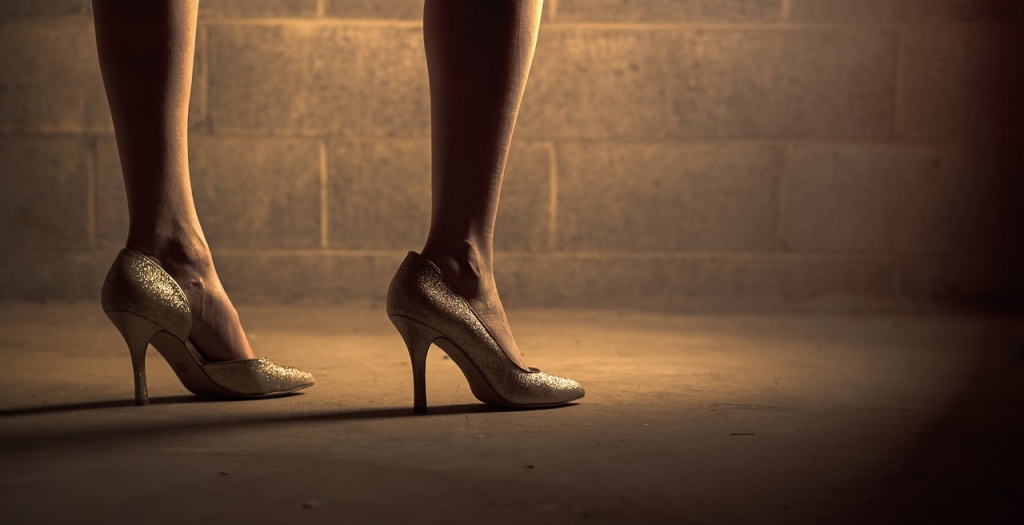Petroleum Product of the Week: High Heels
By on Jun 23 2017

Long before powerful television policewomen were hitting the streets in surprisingly high heels while in the pursuit of bad guys (blister free!), men of history were strutting their stuff in heeled footwear.
...But not really strutting all that well because these shoes weren't actually made for walking.
High Heels: The Essential Accessory for Noblemen
Today, high heels are generally seen as feminine shoes predominantly worn by women. We imagine that stilettos, pumps, and kitten heels have always filled the closets of business professionals, party-goers, housewives, and attendees of the Cannes Film Festival. It's true that since the 20th century women have been stepping it out (and up) wearing heels of varying heights. But if you want to talk real heel history, you have to step it back now, y'all.
Heels (not the same thing as chopines, although their connection to one another is debated) are thought to have been worn by men in the near east for centuries. They were a form of riding (not walking) footwear. Good horsemanship was important to the fighting styles of Persia, and heeled shoes allowed the soldiers to better stand up and shoot their bows and arrows more effectively.
By the 17 th century, Western Europeans were interested in all things Persian including their shoe styles. The European aristocrats adopted the heeled shoes to add virility and masculinity to their appearance. As the fashion trickled down to the lower classes (think along the lines of this scene in The Devil Wears Prada), the aristocrats responded by increasing the height of their heels. Thus, the high heel was born.
A Brief European History

If you think the high heels of the 17 th century were more practical, think again. But that was the whole point, after all. There was no value in trying to walk the dirty, rutted streets in these bad boys. The shoes' sheer impracticality was what made them reflect their privilege.
King Louis XIV of France was known for his red-heeled shoes. At only 5ft 4in, Louis's 4-inch heels gave him a boost. These shoes were often elaborately decorated with battle scene depictions and always had red heels and soles. This was a show of wealth and power as it was a very expensive dye. In the 1670s, Louis XIV declared only individuals in royal favor were allowed to have red heels.
What started as men's fashion made its way to women around the 1630s when women began to masculinise their outfits. Come the 17 th century, styles once again changed and men's shoes began to have more of a squared, lower heel while women's heels became more slender and curvaceous.
Eventually, clothing styles shifted and the distinction between clothes for men and men became more pronounced. Heels were no longer masculine, but rather foolish and effeminate. By 1740, they were solely women's shoes. But after the French Revolution, they pretty much disappeared from all feet entirely.
They started making a comeback in the mid-19th Century, but it wasn't until the 1940s and 50s where heels reached new heights. New technologies made really high heels more stable.
If the Shoe Fits...
Wartime influences all elements of life and fashion is no exception. Post-WWII, steel and extruded metals allowed for the physics of stiletto heels. These were made by using a thin rod of metal inside a broader part of the heel (made from wood or plastic) attached to the shoe. Plastic tips were added but these often fell off.
Modern heels are manufactured using a vast array of materials and styles. Some of the most common materials include leather, wood, fabric, animal hides, and plastic--everyone's favorite petroleum product. Decorations and ornaments can also be made anything from paper to sequins, gemstones, and metal. Nails, screw nails, tacks, and various cement and glues are also used throughout the manufacture and assembly process.
Most high heels these days are mass-produced and made by well-lubricated machines, although handcrafted shoes are made on a limited scale. Handmade heels are usually made for performers or are couture (AKA expensive).

When it comes to footwear, you'll see leather and "manmade materials." If you're not going with leather (maybe for economic or ethical reasons), one popular substitution is artificial leather, which are sometimes made from plastics. Poromeric imitation leather, for example, is typically made with a polyurethane coating on a polyester base layer.
...Wear It.
Heels continue to fall in and out of fashion.
Although the materials and methods for heel-making have shifted, they're still not particularly comfortable, especially for long-term wear, and can cause some health problems. Plenty of people still love high heels despite the pain they may endure when wearing them. But many can't get behind the foot torture and instead opt for flat or lower-heeled shoes.
Although they may not technically be for walking, for many women, that's exactly what they'll do--with confidence, some grace (or some falls and twisted ankles), and some amazing style. And who knows, maybe the power of heels will eventually circle back to men's footwear, too. Or we'll all just turn to athleisure--which I can totally get behind.
Sources:
http://www.bbc.com/news/magazine-21151350
http://www.cbsnews.com/news/stepping-out-a-history-of-high-heels
http://www.madehow.com/Volume-5/High-Heel.html
https://en.wikipedia.org/wiki/Artificial_leather






